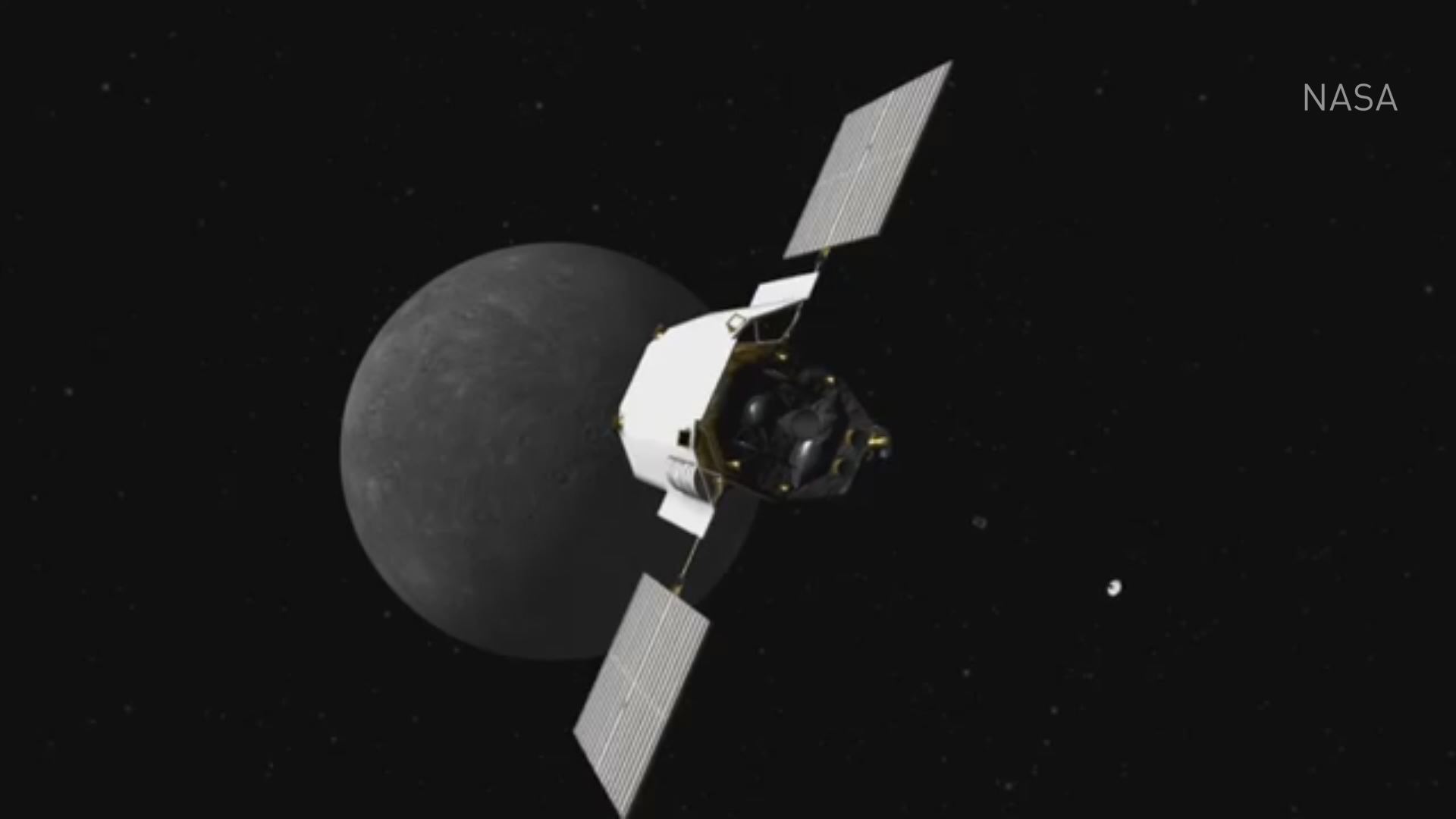BOULDER - Ten years after it left Earth, NASA's Mercury MESSENGER is no more. On Thursday afternoon, it crashed into the surface of the planet at 9,000 MPH.
"Definitely a mission well done," said Aimee Merkel, a CU-Boulder instrument scientist involved with the MESSENGER mission.
MESSENGER (MErcury Surface, Space ENvironment, GEochemistry, and Ranging) began orbiting Mercury four years ago on a mission to tell us more about the planet closest to our sun.
A CU-Boulder instrument onboard, called MASCS (Mercury Atmospheric and Surface Composition Spectrometer), analyzed the surface of Mercury and its atmosphere (or exosphere). CU-Boulder's Laboratory for Atmospheric and Space Physics built the instrument.
"Before MESSENGER, we knew relatively little about the planet Mercury," said Greg Holsclaw, a CU-Boulder research scientist who began working on the mission before it launched in 2000.
The MASCS instrument helped change what we know about Mercury. Many scientific predictions were made about the planet, including the theory that it would mostly be made up of iron. However, MESSENGER didn't find any evidence of iron on the planet surface.
"It seems like everything we thought we knew about Mercury, we knew a lot, but in every detail we were wrong," said Tim Cassidy, CU-Boulder science team member on MESSENGER.
It also found that Mercury, much like Earth, has seasons on display in its exosphere.
"I guess you could call it four seasons. And instead of the temperature changing, like it does on Earth, the density changes quite a bit," Cassidy said.
MESSENGER also spotted areas called "the hollows." They are bright spots where solid rock appears to evaporate into gas.
"They might be even geologically active today," Holsclaw said.
Part of what makes MESSENGER remarkable is that its mission was designed to orbit Mercury for only one year. However, through clever maneuvering and fuel reduction efforts, it orbited for four years and brought us more than 255,000 new images.
In the end, though, its fuel finally ran out.
"It's something that I've been thinking about every day for the last four years, checking the instrument health, downloading data, doing data reduction and science analysis" Merkel said. "So, yes it's sad, but it's a fond farewell."
Despite its end, MESSENGER's data will be studied for many years as we look for a greater understanding of our solar system.
Mercury will get another visitor from Earth in the coming years. In 2017, the European Space Agency will launch its own spacecraft to the planet. Data collected by MESSENGER will be used to help their mission.
(KUSA-TV © 2015 Multimedia Holdings Corporation)


